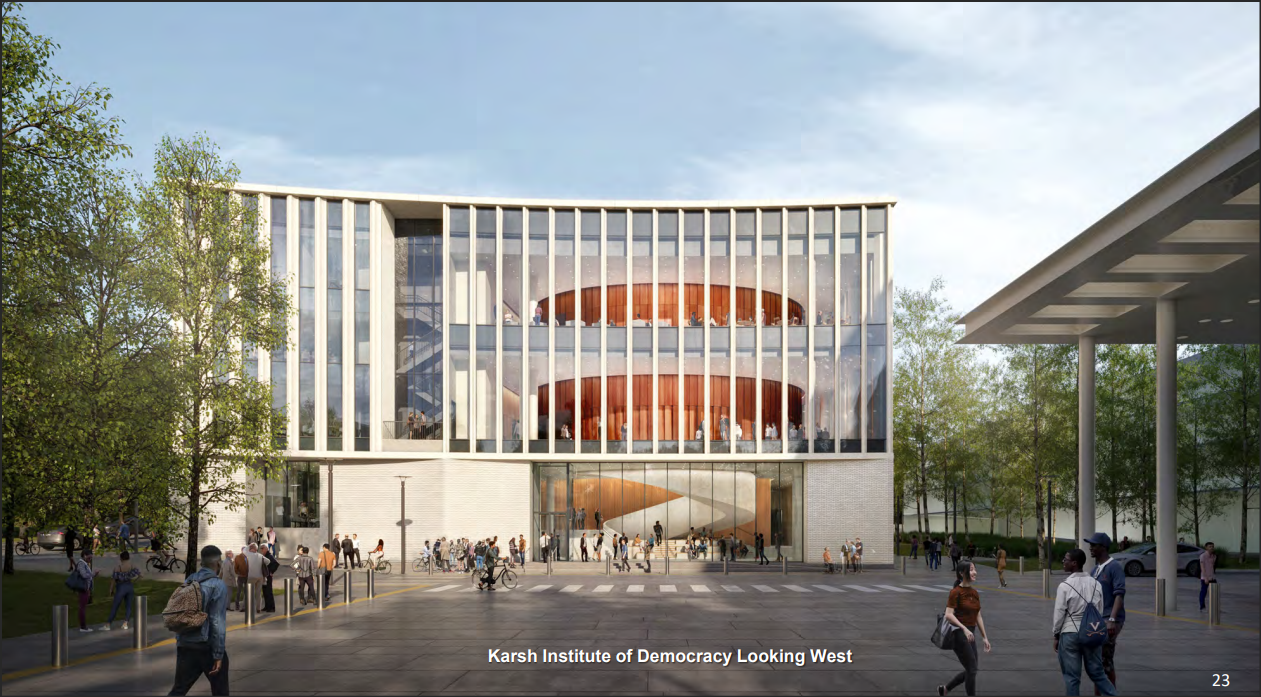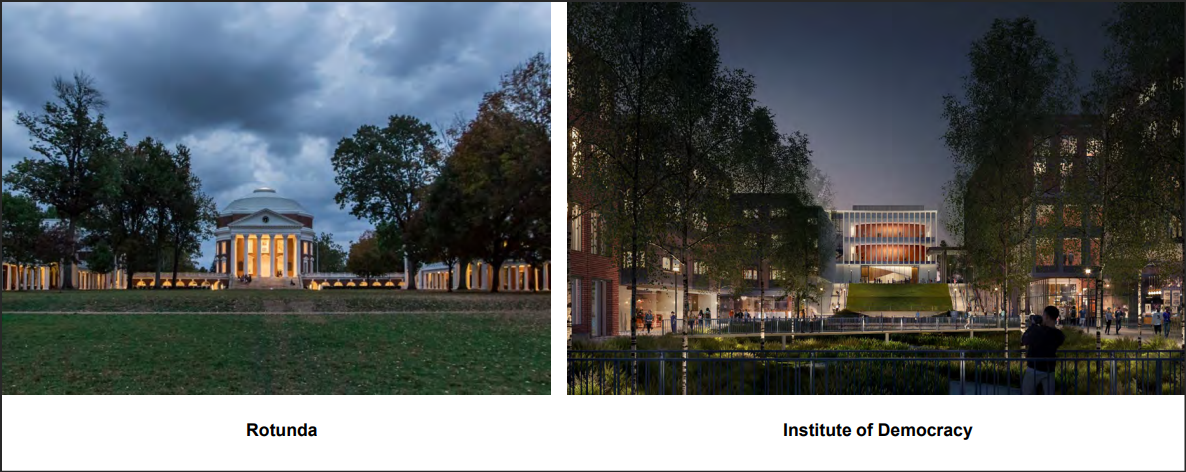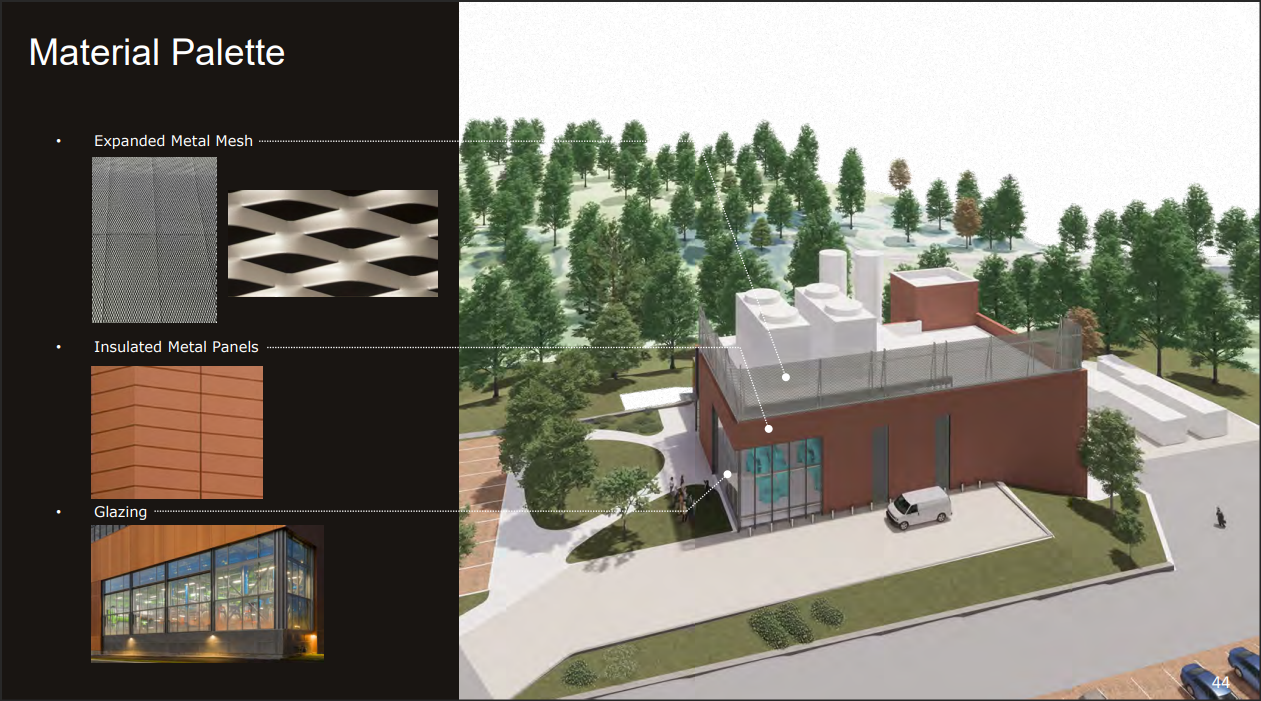
by James A. Bacon
Among its other actions last week the University of Virginia Board of Visitors approved a revised design for the $80 million Karsh Institute for Democracy building. In March several Board members had criticized the original design for conflicting with the red-brick motif of Thomas Jefferson’s architectural masterpiece on the Lawn.
The Karsh building is scheduled to open 200 years after construction was completed on the Rotunda, a symbolism not lost on the architects. The new design still won’t have any of Jefferson’s signature red brick, but, as UVa’s chief architect Alice J. Raucher described it, the building will have “echoes” of the Rotunda even as it makes its own statement about democracy and transparency.
In the two main changes, the architects envision a base of white brick and an auditorium wall of red wood behind a white portico. Raucher described the auditorium as a “warm red drum.” The effect, as seen in the juxtaposed images below, show strong parallels when the buildings are lit up at night.

Most board members who had reservations about the old design expressed pleasure with the revision. Only Bert Ellis, who had been vocal of his disapproval in March, still found the design objectionable. “It’s a beautiful building but has no relationship to the architecture of the university,” he said. If the Board approves the new design, he added, it’s saying that “anything goes” in the Emmet-Ivy Corridor.
The Emmet-Ivy Corridor, a former retail/commercial district, will accommodate the university’s expansion for the foreseeable future. Among other buildings, it will house the new School of Data Science, a hotel/conference center, and other buildings yet to be designated.
The design, by Höweler + Yoon and Hanbury Architects, gives a nod to Jeffersonian themes while making its own statement, Raucher said.
“I like it. You’ve gone back to the drawing board,” said Rector Whitt Clement. “I think it’s spectacular. It will be an iconic building.”
Louis Haddad, a Hampton Roads real estate developer, said that he has been associated with a few iconic buildings over his career. “This building says something special.” He added, “It’s a nod to the past and a look to the future.”
Board member Carlos Brown said he was so impressed with Raucher’s explanation of the thinking behind the design that Karsh should make it “part of the experience.”
Others picked up on the idea. “This is a teaching opportunity,” said former congressman L.F. Payne.

In other business, the Board approved the design for a geothermal heat-recovery chiller facility at the Fontaine Research Park. Billed as a sustainability initiative, the building will provide a baseload for heating and cooling at the biotech research park.
The facility will pump water into a hundred 800-feet-deep wells where it will absorb the constant 58-degree underground temperature. The water will be pumped out and supplemented, as needed during periods of peak hot and cold weather, with conventional heaters and coolers to maintain the desired temperature inside park buildings.
UVa facilities-management officials said the system will cost 15% more than a conventional HVAC system but will generate significant savings — an estimated $1 million annually — from lower electricity bills. As a bonus, the zero-emissions facility should keep roughly 2,000 tons a year of CO2 from being emitted into the atmosphere.




A swing and a miss. Even the A school and Hereford have red brick…As does the Miller Center and everywhere else. And I generally enjoy modern architecture.
Nice building; good job. I wonder if anyone realizes that the US is a republic?
Most which apparently includes the vaunted administration of UVa do not know the USA is a republic but then this new institute will have little to do with either the republic or democracy.
A number of notable contemporary architects have done great works in brick: Kenzo Tange, Louis Kahn, Wright, and more in terns of massing, form & pattern unique to brick design. Skip the white columns (even Jefferson wanted them earth toned) and make a sculptural statement in brick which would relate but stand out as contemporary. Virginia Architecture 69′.
I’ve tried but can find nothing in the design that in any way inspires or is in any way appealing as to the ethos of our University.